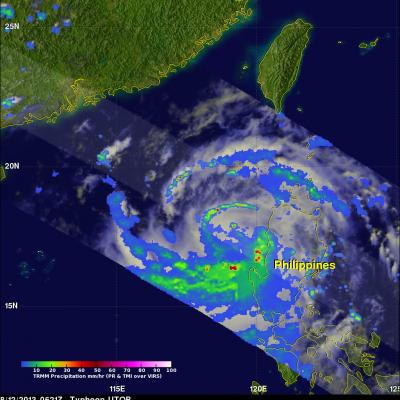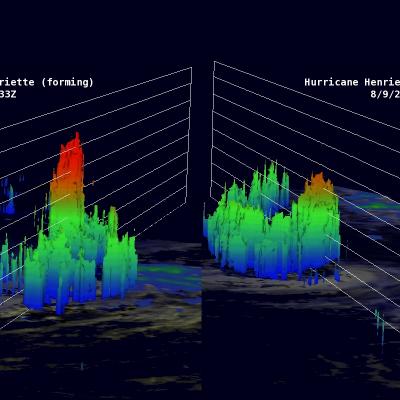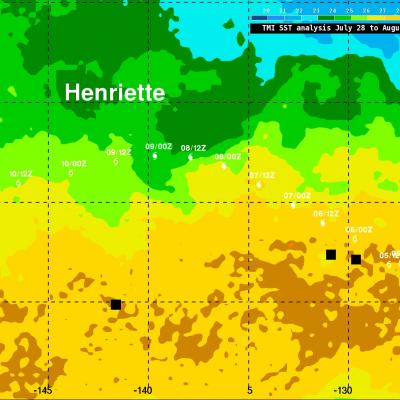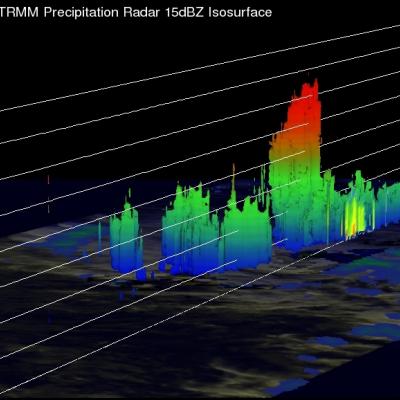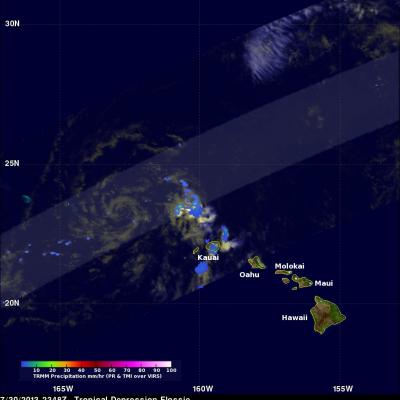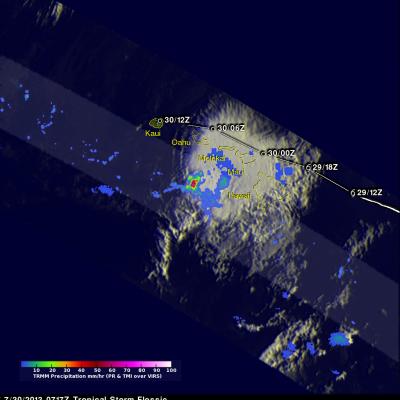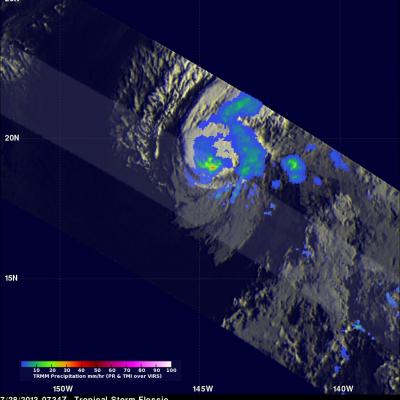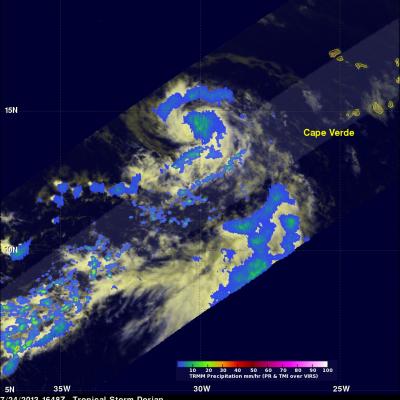Typhoon UTOR Hits The Philippines
A category four typhoon called UTOR hit the Philippines with wind speeds of about 120kts (~138 mph). It has been reported that at least one person was killed and 20 fishermen are missing. Landslides are also likely due to heavy rainfall that is occurring over the Philippine's rugged mountainous terrain. The image above used data collected by the TRMM satellite when it passed over UTOR on August 12, 2013 at 0621 UTC as it was exiting the Philippines into the South China Sea. TRMM's Microwave Imager (TMI) and Precipitation Radar (PR) data are shown overlaid on a combination Infrared/Visible


